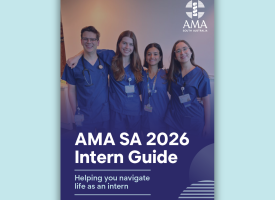AMA’s latest Report Card shows public hospitals backsliding
The 2021 Public Hospital Report Card shows even during the 2020 lockdowns, hospitals were still overwhelmed – with backsliding or barely-improved performance.

The Public Hospital Report Card 2021 published today shows even during the 2020 lockdowns, hospitals were still overwhelmed – with backsliding or barely-improved performance, even with dramatically reduced patient volumes.
AMA President Dr Omar Khorshid said public hospitals need help now.
“This year’s report card was remarkable in that hospitals continued to struggle in 2020 when Australians stayed home, and we weren’t dealing with Delta or high COVID-19 hospitalisations,” he said.
Key findings highlight Australians seeking emergency treatment and classed as ‘urgent’ had only a one in three chance of being seen on time in the worst-performing jurisdiction, the ACT, and about a one in two chance in South Australia and Western Australia.
“At the very best, you’ll have a three in four chance of being seen in 30 minutes after arriving at the hospital if you live in NSW,” Dr Khorshid said.
Only 69 per cent of Australians attending ED nationally were treated and able to leave the ED within four hours.
“So, if you’re in an ED in Victoria, the ACT, Tasmania, South Australia, Northern Territory it’s more likely you’ll still be there after four hours than if you were in WA, NSW or QLD.”
This performance was against a backdrop of the number of patients presenting to EDs dropping 1.4 per cent in 2019-20 – a temporary reversal of the trend of 3.2 per cent year-on-year growth over the previous five years.
Despite putting a hold on non-urgent treatments and lower ED demand, hospitals treated only 75 per cent within the recommended timeframe for Category 2 elective surgery.
“In reality, what this means is that 25 per cent of people will wait longer than 90 days for surgeries. And if you’re in Tasmania you’ve got more than a 63 per cent chance you’ll be waiting longer than that – hard to believe for a world class health system,” Dr Khorshid said.
The ratio of beds available for every 1,000 people over the age of 65 continued its downward trend for 27 years, with no improvement.
Of those urgent patients who did arrive at the ED, more were seen within 30 minutes than last year.
“Fewer admissions during the lockdown led to more free beds for those waiting for admission from the ED, therefore freeing up the ED to treat those still waiting outside. That tells us that performance will be improved if we give hospitals the beds, the staff and the resources to do it.
“Our hospitals have served us well, time and time again. It’s time we returned the favour and developed a national partnership to give our hospitals what they need to do their job. They deserve better,” Dr Khorshid said.



